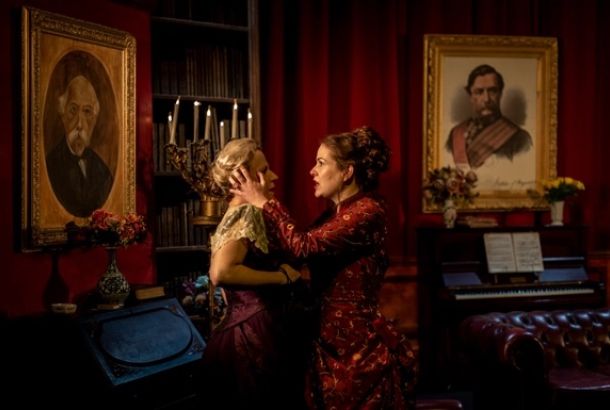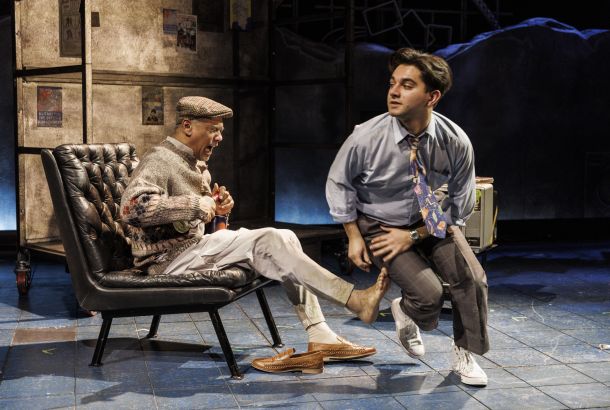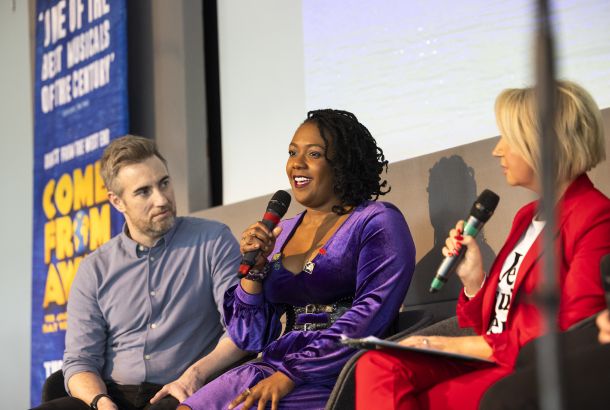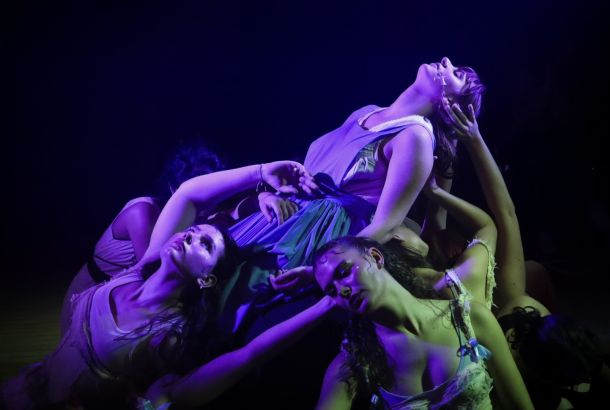Review: A Pacifist’s Guide to the War on Cancer
“And that would make a cracking musical”, the final words of Bryony Kimmings and Brian Lobel’s touching, hard-hitting, down-to-earth musical A Pacifist’s Guide to the War on Cancer. Those words are delivered by Kimmings herself through a voice-over, teasing at the fourth wall between the playwright and company.
The opening scene explores what we are all thinking as we rush through the morning commute with our faces glued to our screens- the need to appear busy and focus on the task at hand. The company’s first song portrays the subconscious fear of cancer while trying to have a positive outlook on the busy commute ahead. Kimmings, also director of the show, uses characters in costumes comprising bright, assorted balls to deliver scientific facts about cancer and, later in the show, represent the omnipresence of cancer in the characters’ minds and lives. The first character we meet is Emma Kenworthy, whose baby son is having tests at the hospital. Emma is in blissful denial as to her son’s health; through Emma and the other characters we get the chance to explore the different coping mechanisms that are employed when dealing with the unimaginable.
We see frustration with a dip in sexual partners, reluctance to inform colleagues and admit a change in routine and refusal to accept round-the-clock care. One of the most interesting parallels I noted was between Emma and the mother of Steven, who are both caring for their sons as they battle with cancer. While Emma does not want to admit that anything is wrong, despite the neon characters dawdling around the stage and her mind, Steven’s mother takes a more hands-on approach and accompanies Steven to every appointment, trying to remain positive.
The musical aspect of the show was the aspect that I was most looking forward to, as musical theatre is not the genre that springs to mind when one thinks about a production about cancer. The songs in the first act were lively, creative, truthful and powerful in portraying the feelings of the characters in a candid and relatable way. Kimmings, Tom Parkinson (composer) and Lizzi Gee (choreographer) manage to juxtapose harrowing sentiments with bright melodies and flashy composition, which keeps the audience’s spirits high and reflects the optimism that comes and goes in all of the characters’ journeys.
The second act, however, had a less animated atmosphere. Reflective of the journey through a degenerative illness, energy levels diminished, spirits dropped and reality kicked in. The characters search for solutions from God, the Universe, Mother Nature and the Internet, justify the fact that they do not constantly feel positive, and share space in their mind and on the stage with inflated representations of cancer. The company interacts with the audience, cancer survivors and Kimmings, which adds to the uniqueness of the show and makes for a more memorable experience.
Kimmings and Lobel’s use of real characters’ stories make the plot more harrowing and effective; you could not make up the thoughts, reactions and endings in these journeys through cancer. The costumes are bold in their representation of the characters’ personalities and backgrounds; the hospital gowns have ‘hospital property’ printed across them in large, colourful writing as a symbol of their new lives as residents of the ward.
The show exceeded my vague and curious expectations; I expected to learn more about different perceptions of the war on cancer, in a way similar to the manner in which Adam Brace’s They Drink it in The Congo exhibited characters trying to tackle a difficult subject matter with varying backgrounds and resources; the brightly-clad characters silently ambling the stage at HOMEMCR reminded me of the man in a bright pink suit who followed the protagonist around in They Drink it in The Congo, brightening the stage and the atmosphere.
I would recommend this play on the grounds of it being an enjoyable, educational, emotional and inviting show. The talent of the company is astonishing: in my opinion the standout cast members were Naana Agyei-Ampadu, whose sprightly acting and powerful voice seamlessly tell the story of Gia Jones, and Jenny Fitzpatrick, who played Dr. Lacey and an Ensemble member, with fantastic vocal skills. Some people I have spoken to are hesitant to see a play about an illness, never mind one of the most prevalent and grave illnesses in our society. However, this play tells us that it is not only okay but also important and productive to talk, sing and shout about cancer, in the hope that more people are encouraged to do so, and with the hope that some day no one will have to.
A Pacifist’s Guide to the War on Cancer is the most recent of Kimmings’ socially charged and unique artworks. Currently touring the UK, the performance stops next at Exeter Northcott Theatre and will close in London’s National Theatre.







